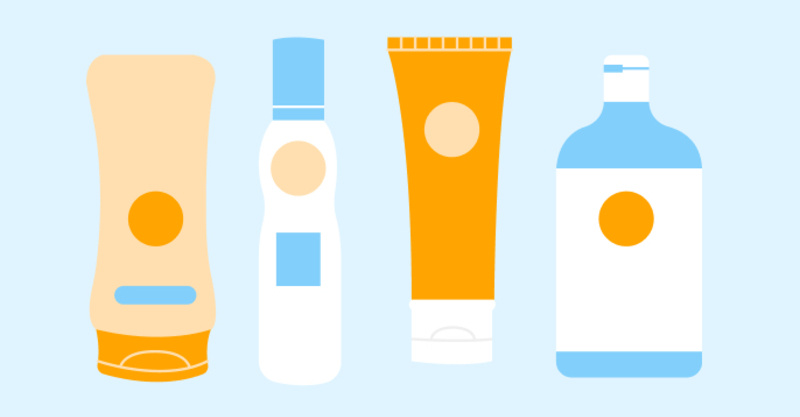Key Points
- Melanoma, the most dangerous form of skin cancer, is on the rise, particularly among younger individuals and women under 40. It is now the third most diagnosed cancer among 25-29 year olds.
- Moles are a common occurrence and are usually harmless, but changes in their appearance can signal melanoma. The ABCDEs of melanoma (Asymmetry, Border, Color, Diameter, Evolving) can help identify potential signs of this skin cancer.
- Tanning beds are strongly linked to melanoma due to the deep penetration of UVA light into the skin. Using a tanning bed before the age of 35 increases the risk of melanoma by 75%.
- The best way to reduce the risk of melanoma is to protect oneself from UV exposure. This includes staying in the shade, wearing protective clothing and sunglasses, using broad-spectrum sunscreen, and avoiding tanning beds.
- Melanoma is curable if detected early, making regular skin cancer screenings an important part of preventative healthcare. Individuals with fair skin, blonde or red hair, or blue eyes are at a higher risk of developing melanoma.
Melanoma is the most dangerous form of skin cancer—and it's on the rise in younger people.
The Melanoma Research Alliance reports that over the last decade invasive melanoma cases have increased by 27% annually. A portion of these increasing numbers are in people (especially women) under the age of 40, according to the Mayo Clinic. In fact, according to the Mayo Clinic, melanoma is now the 3rd most diagnosed cancer among individuals between 25 and 29 years old.
Melanoma is considered the most dangerous type of skin cancer, because of its ability to spread to other parts of the body. While the evidence of increasing cases is concerning, there is a lot you can do to lower your risk while still enjoying the summer sun.
Mole-ology 101: What’s Normal & What Isn’t
Moles are small spots on the skin that are pigmented differently than the surrounding skin, and they’re a totally normal occurrence (most people have around 10 to 40 moles, which mostly pop up during childhood). The vast majority of moles are completely harmless, and you can develop new (normal) moles until around age 40 according to the Mayo Clinic.
According to the Mayo Clinic, normal moles are generally oval or round in shape, and usually quite small (no bigger than a pencil eraser). They also have distinct borders and are the same color (typically tan, brown, or black).
Moles can change in appearance over time (or disappear altogether) according to the Mayo Clinic. However, some new or rapidly changing moles are a major warning sign that you may have melanoma—so it’s important to keep an eye on your skin for any changes. The American Cancer Society recommends doing a self-exam on your skin once a month and then visiting a dermatologist annually for a skin cancer screening. While you’re doing your self-exam, remember the ABCDEs of melanoma.
The ABCDEs Of Melanoma
The first five letters of the alphabet serve as a mnemonic to remember the warning signs of melanoma. Here are the ABCDEs of melanoma, according to the Skin Cancer Foundation:
- A is for Asymmetry. Most moles are symmetrical (like an oval or circle), however, melanomas can be misshapen. If you draw a line down the middle of your mole and it looks different on either side of the line, it could mean you have a melanoma.
- B is for Border. The borders of a melanoma can be uneven or even appear jagged (normal moles will have a clean and distinct border).
- C is for Color. While normal moles are usually a single shade, melanomas may have different shades of brown, tan, or black—even red, white, or blue colors may also appear.
- D is for Diameter. Normal moles are usually small, around 1/4 inch (6mm) or less. However, melanomas tend to grow larger, so anything that is bigger than a pencil eraser should be evaluated by a medical provider.
- E is for Evolving. Any change in a mole's size, shape, or color could be a sign of melanoma. Other symptoms that are mentioned under this category are bleeding, itching, or developing a crusty appearance.
If you notice a mole with one or more of these characteristics the American Cancer Foundation recommends that you take a picture with your cell phone and schedule an appointment with your primary care physician or dermatologist for further evaluation.

The Riskiest Rays
You may have heard conflicting information about tanning beds. In the past, some have said tanning is less risky than natural sunlight. However, this couldn’t be farther from the truth. In fact, The Skin Cancer Foundation tells us that tanning beds are strongly linked to melanoma because the UVA light penetrates the skin more deeply than the UVB light of the sun. In their studies, the Melanoma Research Alliance found that using a tanning bed before the age of 35 causes a 75% increase in melanoma. So if you’re thinking about getting your tan on, The Skin Cancer Foundation recommends using self-tanning sprays or lotions.
How To Protect Yourself From Melanoma
Since melanoma is caused by too much exposure to UV light, the biggest way you can lower your risk is by protecting yourself from UV exposure. Sun safety tips from the CDC include:
- Staying in the shade as much as possible
- Wearing clothing that covers your arms and legs
- Wearing a hat with a wide brim that offers shade to your face, ears, and neck
- Wearing sunglasses that protect from both UVA and UVB rays
- Using a broad-spectrum sunscreen with an SPF of 15 or higher
- Avoid tanning beds
Your risk of developing melanoma increases as you age, but with more young people than ever before being diagnosed, it is important to consider other risk factors. The Cleveland Clinic warns that people who have fair skin, blonde or red hair, or blue eyes, all have a higher risk of developing melanoma.
Melanoma is curable, especially if it is caught early. Because of this, skin cancer screenings are an important part of a preventative healthcare routine.
Ready to schedule a skin cancer screening? Use Solv to find your nearest urgent care clinic.
Frequently asked questions
What is melanoma and why is it considered dangerous?
Melanoma is the most dangerous form of skin cancer due to its ability to spread to other parts of the body. It is on the rise, especially among younger people and women under the age of 40.How have melanoma cases changed over the last decade?
Over the last decade, invasive melanoma cases have increased by 27% annually. It is now the 3rd most diagnosed cancer among individuals between 25 and 29 years old.What are the characteristics of normal moles?
Normal moles are generally oval or round in shape, small (no bigger than a pencil eraser), have distinct borders, and are the same color, typically tan, brown, or black.What are the ABCDEs of melanoma?
The ABCDEs of melanoma are: Asymmetry (melanomas can be misshapen), Border (melanomas can have uneven or jagged borders), Color (melanomas may have different shades), Diameter (melanomas tend to grow larger than normal moles), and Evolving (any change in a mole's size, shape, or color could be a sign of melanoma).How are tanning beds related to melanoma?
Tanning beds are strongly linked to melanoma because the UVA light they emit penetrates the skin more deeply than the UVB light of the sun. Using a tanning bed before the age of 35 causes a 75% increase in melanoma.How can I protect myself from melanoma?
You can lower your risk of melanoma by protecting yourself from UV exposure. Tips include staying in the shade, wearing clothing that covers your arms and legs, wearing a hat and sunglasses, using a broad-spectrum sunscreen with an SPF of 15 or higher, and avoiding tanning beds.Who is at a higher risk of developing melanoma?
People who have fair skin, blonde or red hair, or blue eyes, all have a higher risk of developing melanoma.Is melanoma curable?
Yes, melanoma is curable, especially if it is caught early. Regular skin cancer screenings are an important part of a preventative healthcare routine.
Solv has strict sourcing guidelines and relies on peer-reviewed studies, academic research institutions, and medical associations. We avoid using tertiary references.


 LinkedIn
LinkedIn










